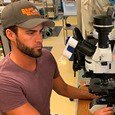Cryptic Biodiversity in Freshwater Ecosystems
A special issue of Diversity (ISSN 1424-2818). This special issue belongs to the section "Biodiversity Conservation".
Deadline for manuscript submissions: closed (25 August 2021) | Viewed by 11018
Special Issue Editors
Interests: microbial eukaryotes; microbial ecology and biodiversity; biogeography; symbiosis
Special Issue Information
Dear Colleagues,
Public awareness of nature is at an all-time high, with data showing that nine out of ten adults are concerned about biodiversity loss and threats to the natural environment. Biodiversity, climate change and conservation tend to focus on particular species that are symbolic of specific habitats, such as polar bears. This helps to raise public and scientific awareness and, with it, support for their conservation. But biodiversity is much more than that – and that is what this Special issue on Cryptic biodiversity in freshwater ecosystems sets off to investigate. For some, cryptic biodiversity refers to organisms invisible to the naked eye (the realm of the microscopic world), or those that are dormant or perhaps present in such low numbers that they are undetected during routine microscopic surveys. This ‘unseen’ biodiversity is responsible for the functioning of ecosystems and for their recovery after environmental change. Others consider cryptic species as the discrete (e.g. sibling, molecular) species that are undistinguishable morphologically, and which occur in many taxonomic groups. This Special issue focuses on freshwater aquatic environments and offers a window into the hidden worlds of their diverse cryptic species, from micro- to macro-organisms. The investigation of cryptic species enhances our understanding of the ecology of freshwater systems, and forms the grounds for future conservation efforts for species at all levels of concern.
Prof. Dr. Genoveva F. Esteban
Dr. Hunter N. Hines
Guest Editors
Manuscript Submission Information
Manuscripts should be submitted online at www.mdpi.com by registering and logging in to this website. Once you are registered, click here to go to the submission form. Manuscripts can be submitted until the deadline. All submissions that pass pre-check are peer-reviewed. Accepted papers will be published continuously in the journal (as soon as accepted) and will be listed together on the special issue website. Research articles, review articles as well as short communications are invited. For planned papers, a title and short abstract (about 100 words) can be sent to the Editorial Office for announcement on this website.
Submitted manuscripts should not have been published previously, nor be under consideration for publication elsewhere (except conference proceedings papers). All manuscripts are thoroughly refereed through a single-blind peer-review process. A guide for authors and other relevant information for submission of manuscripts is available on the Instructions for Authors page. Diversity is an international peer-reviewed open access monthly journal published by MDPI.
Please visit the Instructions for Authors page before submitting a manuscript. The Article Processing Charge (APC) for publication in this open access journal is 2100 CHF (Swiss Francs). Submitted papers should be well formatted and use good English. Authors may use MDPI's English editing service prior to publication or during author revisions.
Keywords
- microbial eukaryotes
- cryptic species
- biogeography
- conservation
- climate change
Benefits of Publishing in a Special Issue
- Ease of navigation: Grouping papers by topic helps scholars navigate broad scope journals more efficiently.
- Greater discoverability: Special Issues support the reach and impact of scientific research. Articles in Special Issues are more discoverable and cited more frequently.
- Expansion of research network: Special Issues facilitate connections among authors, fostering scientific collaborations.
- External promotion: Articles in Special Issues are often promoted through the journal's social media, increasing their visibility.
- e-Book format: Special Issues with more than 10 articles can be published as dedicated e-books, ensuring wide and rapid dissemination.
Further information on MDPI's Special Issue polices can be found here.






